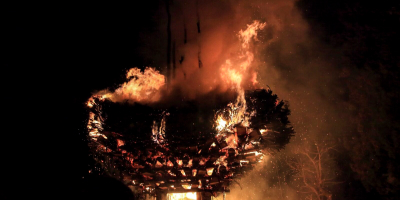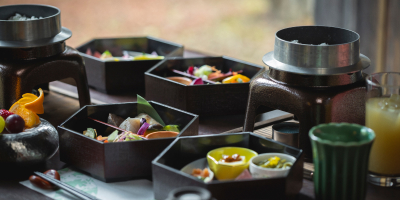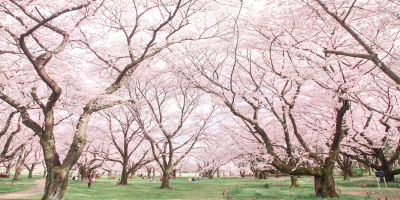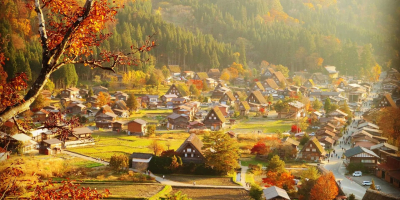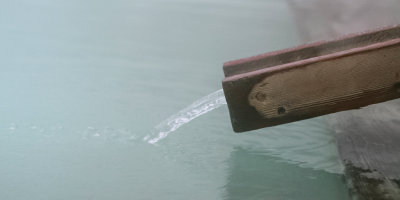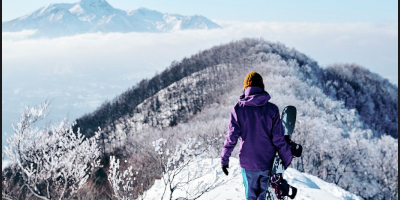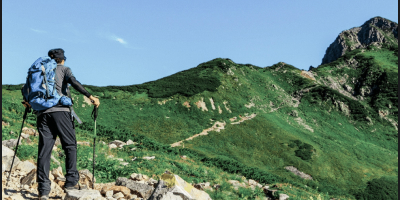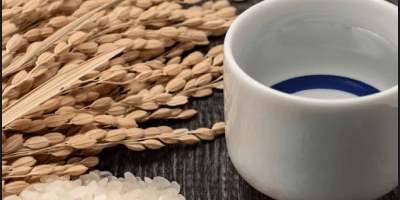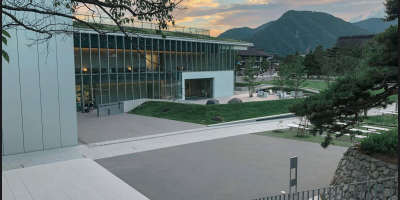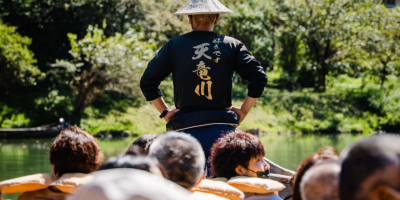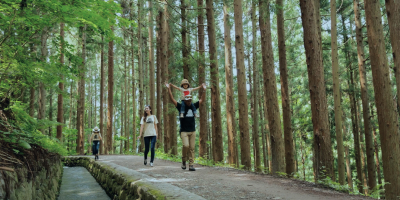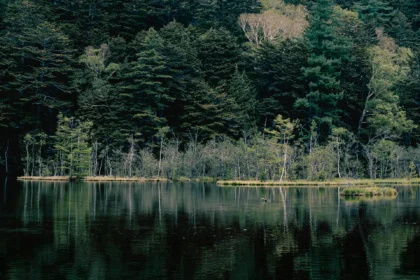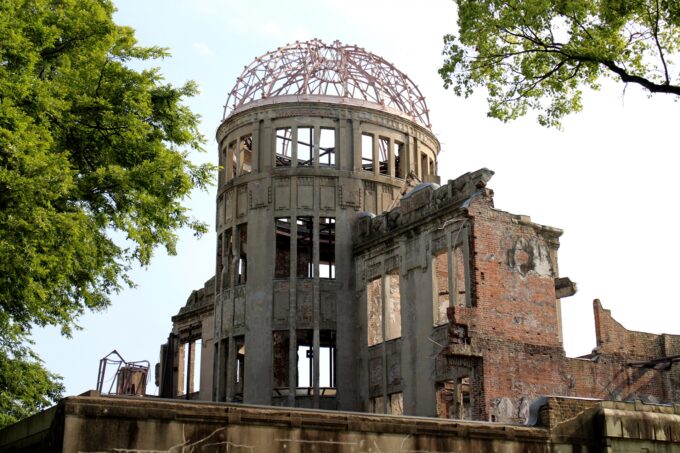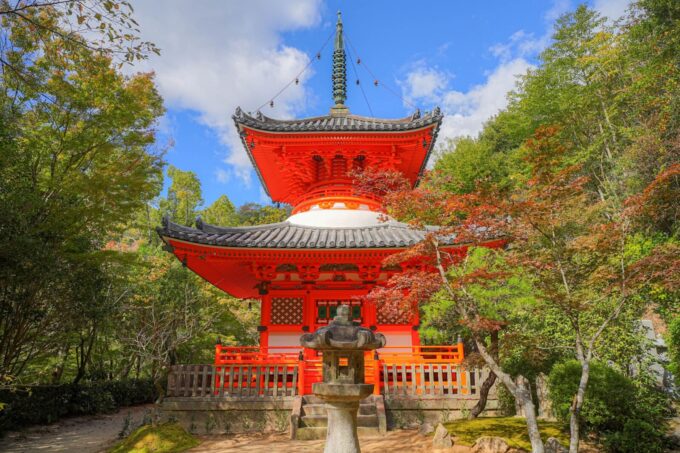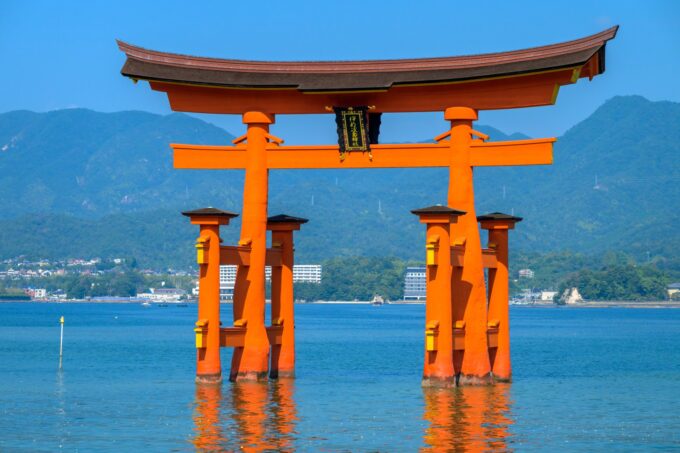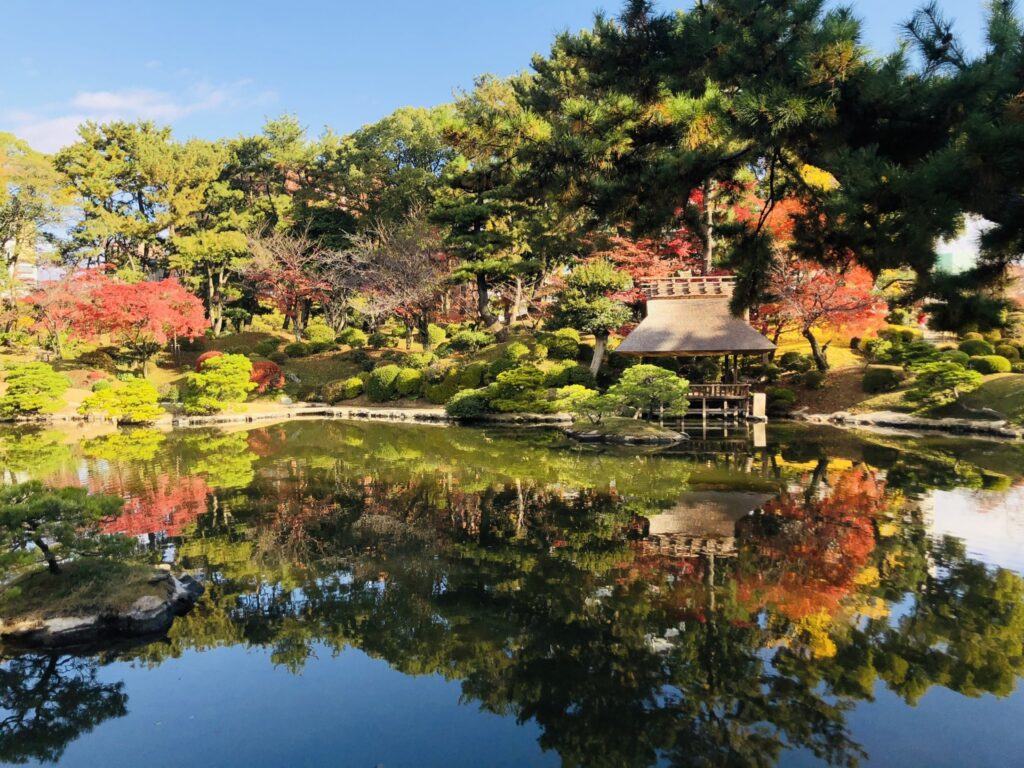
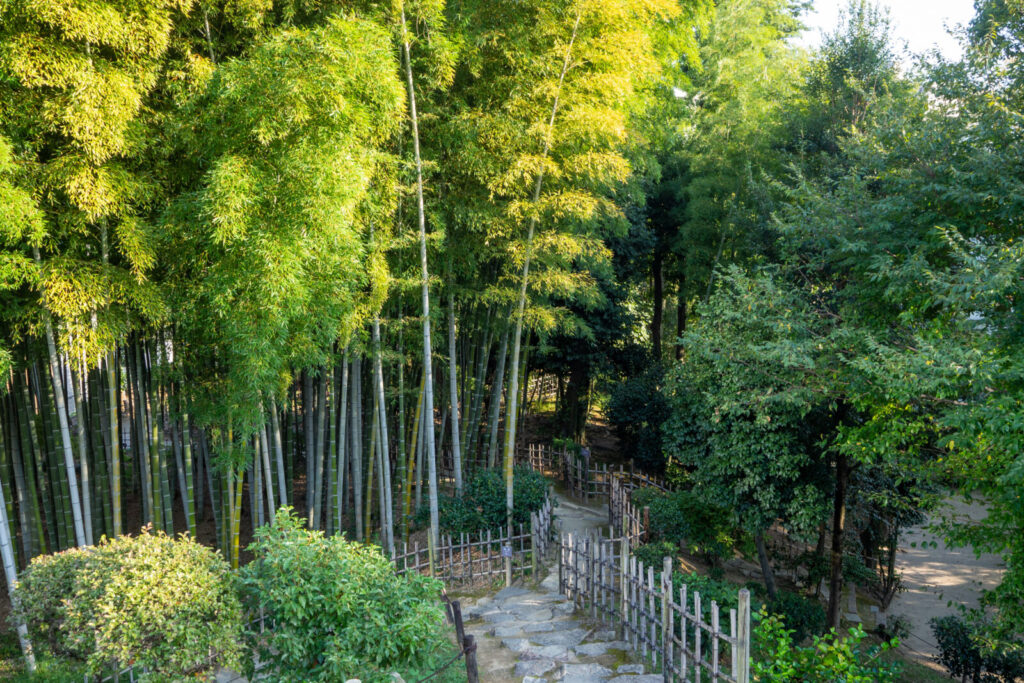
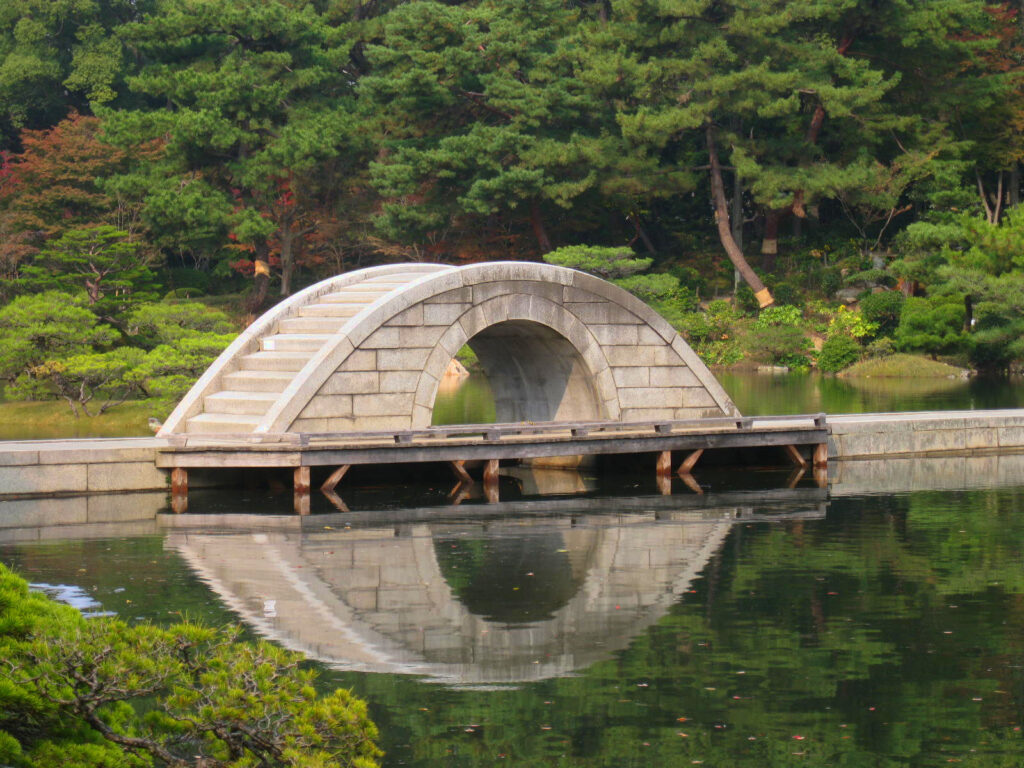
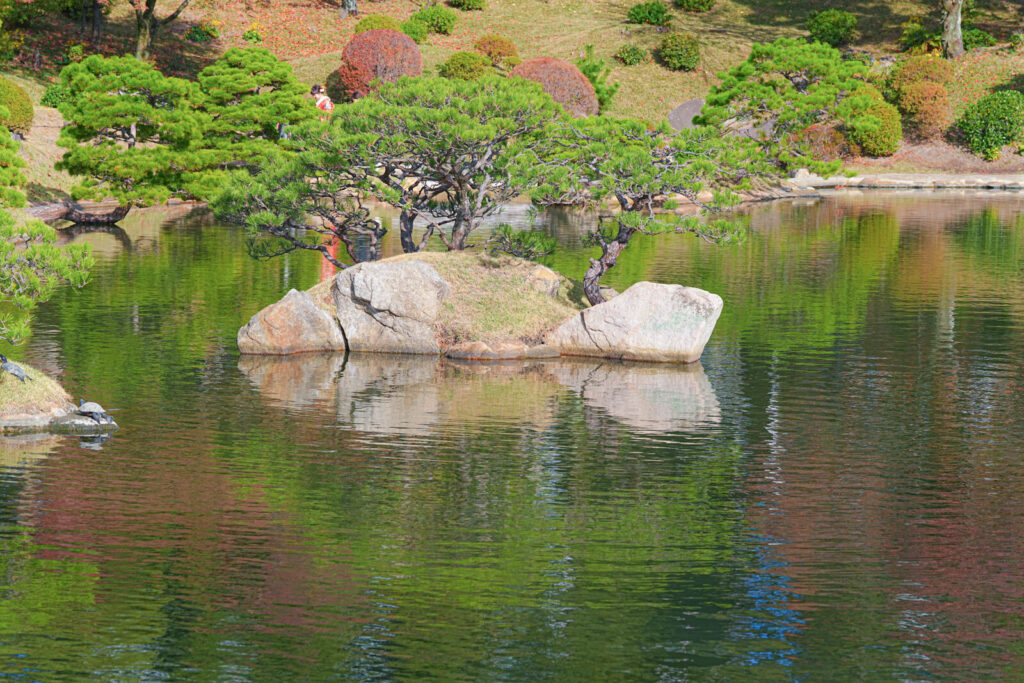
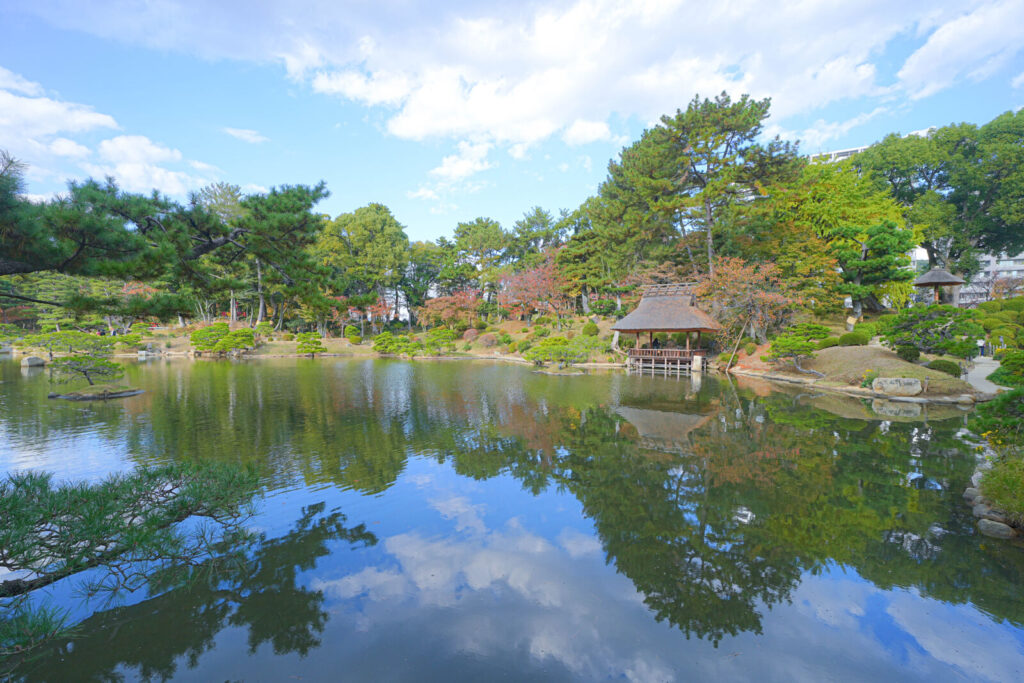
Shukkei-en Garden was unfortunately destroyed when the atomic bomb was dropped on Hiroshima. But, thanks to the efforts of the city and its people, the garden was able to reopen just a few years later in 1951. To this day, it remains a popular sightseeing spot which hosts multiple events throughout the year, mostly revolving around tea ceremonies. The garden was built in the kaiyu-style, meaning it is meant to be explored following a circular path which extends all around it. Different “walking courses” advice visitors on how to enjoy the garden in a quick or leisurely manner.
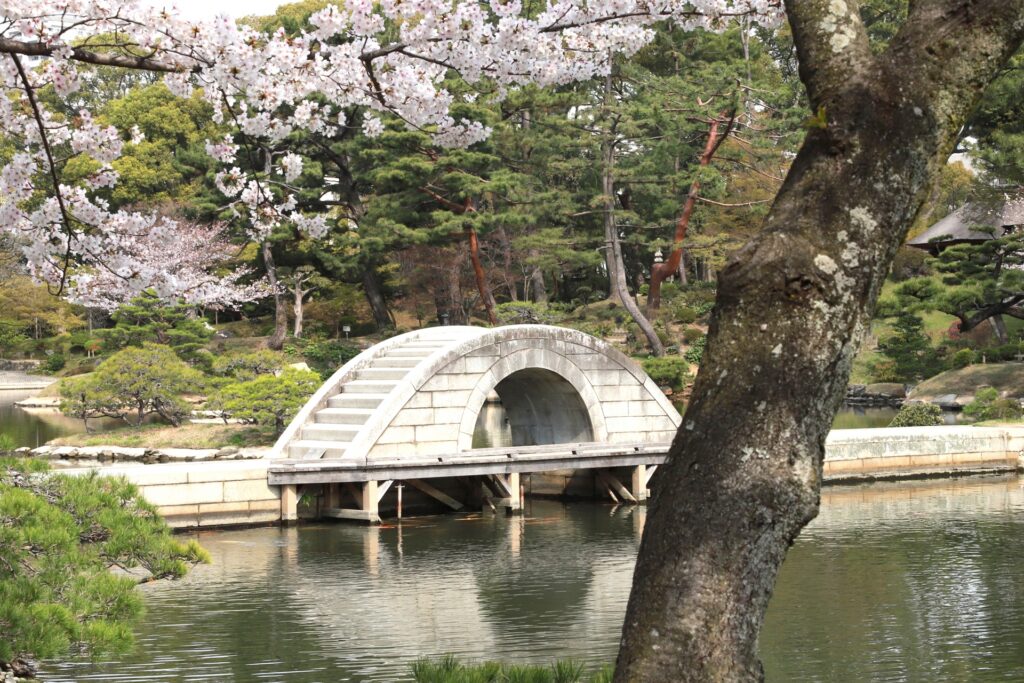
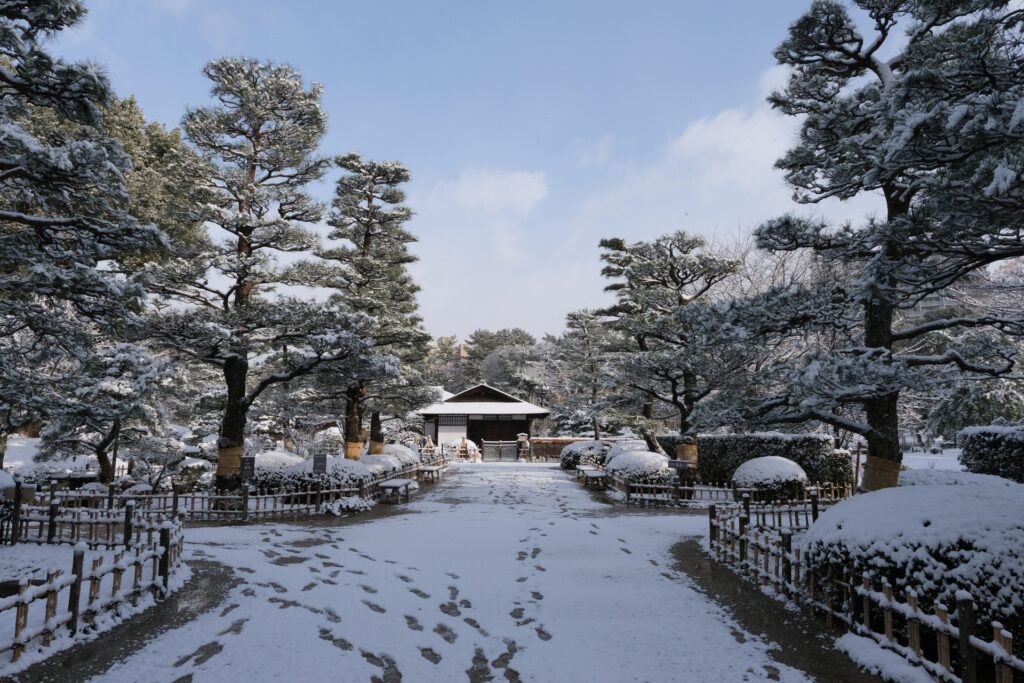
As is typical of Japanese gardens, Shukkei-en Garden has multiple sections of seasonal trees and flowers which allow guests to enjoy differing versions of it throughout the year. Those who visit during fall can delight in the beauty of the maple trees and their vibrant red leaves. In spring, the cherry blossoms around the garden create a stunning sea of pink. When it snows during the winter, Shukkei-en garden gains a unique ethereal look and whimsical atmosphere. During the summer, the colors are lively, and the trees are all lush and a vibrant green. No matter what time of year you visit Hiroshima, we definitely recommend making a stop by this historic garden.
-- Where is Shukkei-en Garden?
-- Design Principles and Layout
-- Tours Visiting Shukkei-en Garden
WHERE IS SHUKKEI-EN GARDEN?
The garden is located within the city centre of Hiroshima. It is about a 10-minute walk from both Hiroshima Castle and Hiroshima Station, making it quite easy to reach on foot. The garden can be accessed either though its Main Gate or the Hiroshima Prefectural Art Museum, which it is attached to. Those using the Hiroshima Loop Bus can get off right next to the garden on the “Hiroshima prefectural Art Museum” stop.
HISTORY OF THE GARDEN
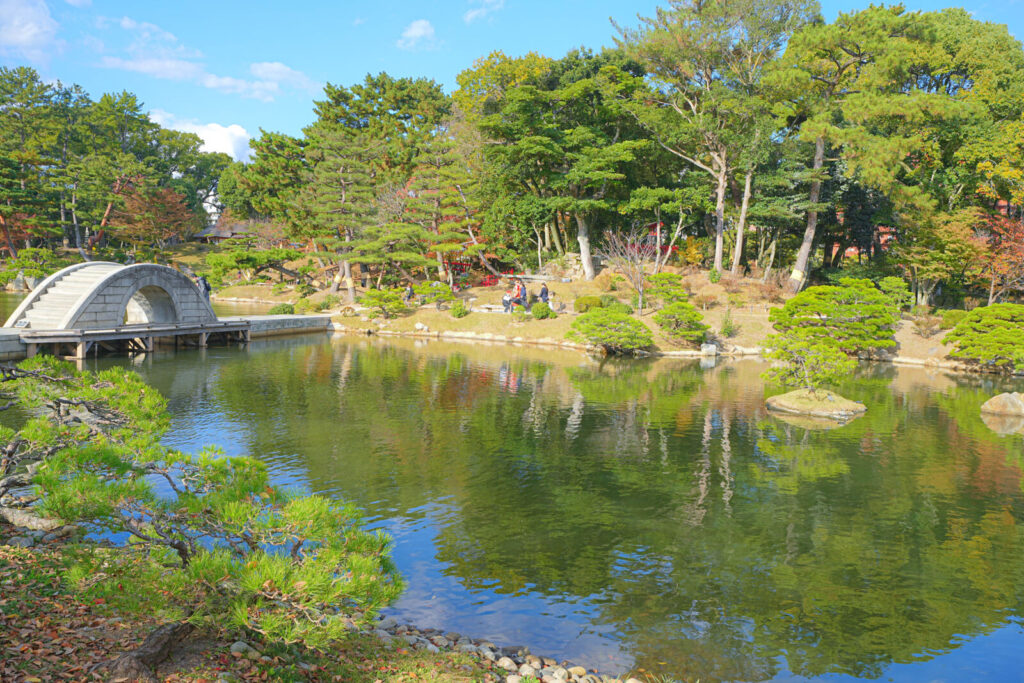
Shukkei-en Garden was built by the third lord of Hiroshima Castle, Asano Nagaakira. He was a powerful feudal lord whose family went on to rule Hiroshima and its surrounding area for the next 250 years. The garden was built and designed by Ueda Sōko, a famous master of the tea ceremony and Asano’s principal retainer. Uniquely, Shukkei-en Garden was not constructed within the lord’s castle grounds as was accustomed at that time, but rather about 600 meters away from Hiroshima Castle. This original garden was slightly different than the one we can see today, as it had a lot fewer trees and a central wooden bridge as opposed to the current stone one.
As mentioned previously, Shukkei-en Garden has been rebuilt and renovated several times. First, it had to be reconstructed after a fire burned down the garden and a large part of Hiroshima Castle in 1758. Later, from the years 1783 to 1788 the garden underwent extensive renovations at the behest of Asano Shigeakira, the seventh lord of Hiroshima Castle. It was during this time that the stone bridge Kokō-kyō was added. Another reconstruction had to take place after 1945, since the garden was completely destroyed by the atomic bomb. It is important to note, however, that the stone bridge was able to withstand the blast.
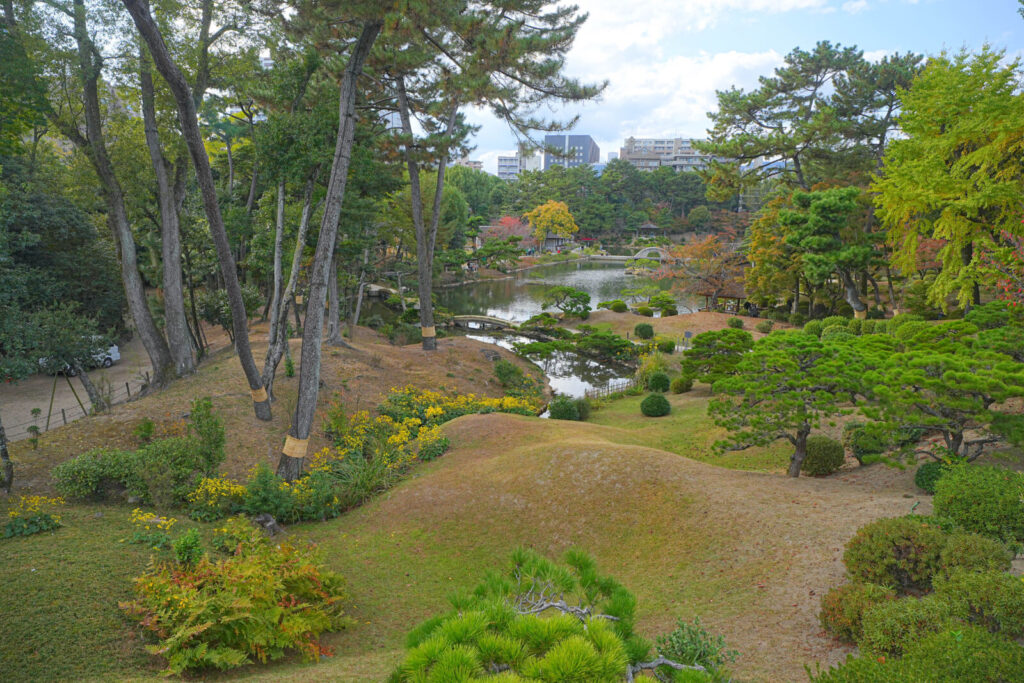
Shukkei-en Garden had been donated to Hiroshima Prefecture in 1940 by the Asano clan. It was a beloved place for locals and served as an evacuation site for the community during the Second World War. The destruction of the garden was a significant blow to the heart of Hiroshima’s citizens, and thus, it was an important site that had to be rebuilt in order to raise the spirits of the people and restore the city to what it once was. While Shukkei-en Garden officially reopened in 1951, it continued to undergo renovations for about thirty more years, culminating in the landscape that we can enjoy today.
DESIGN PRINCIPLES AND GARDEN LAYOUT
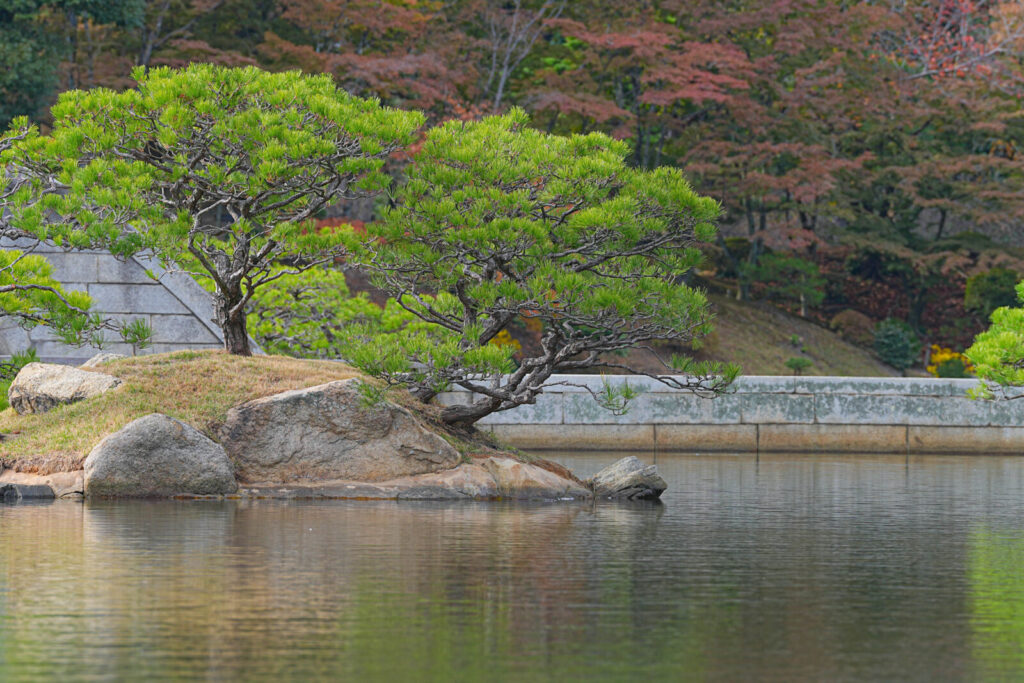
Japanese gardens come in various shapes and sizes but are all united by common design and aesthetic principles. In general, Japanese gardens focus on the concept of “miniaturization,” attempting to create an idealized miniature view of nature. In these gardens, ponds represent seas and the small land or rock formations within them are meant to be islands. Large rocks and hills are considered mountains and plants are carefully arranged to imitate nature.
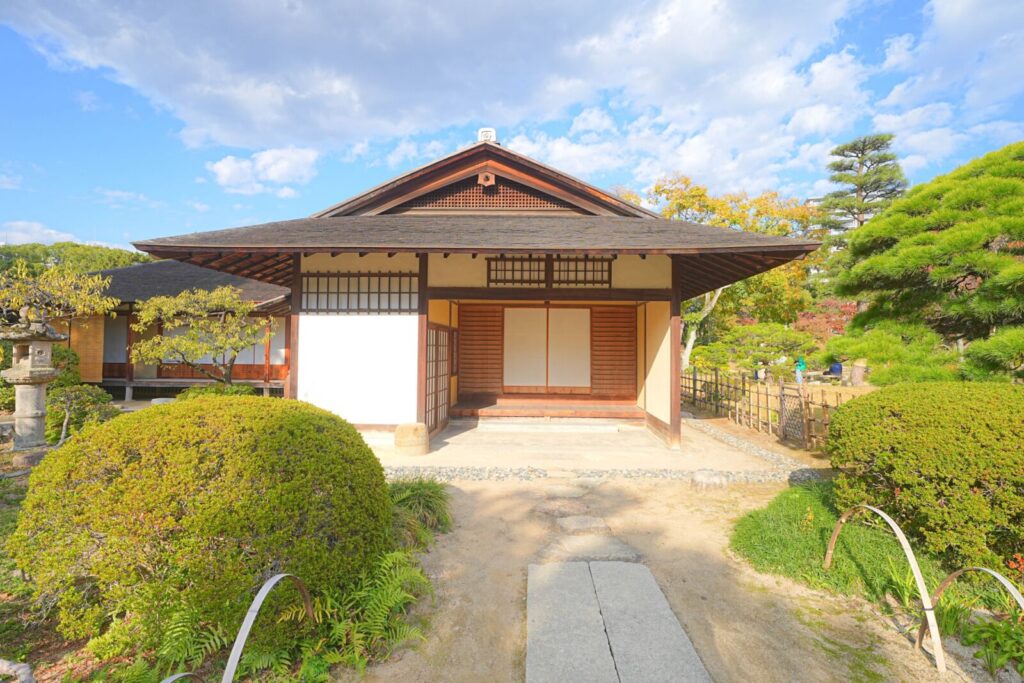
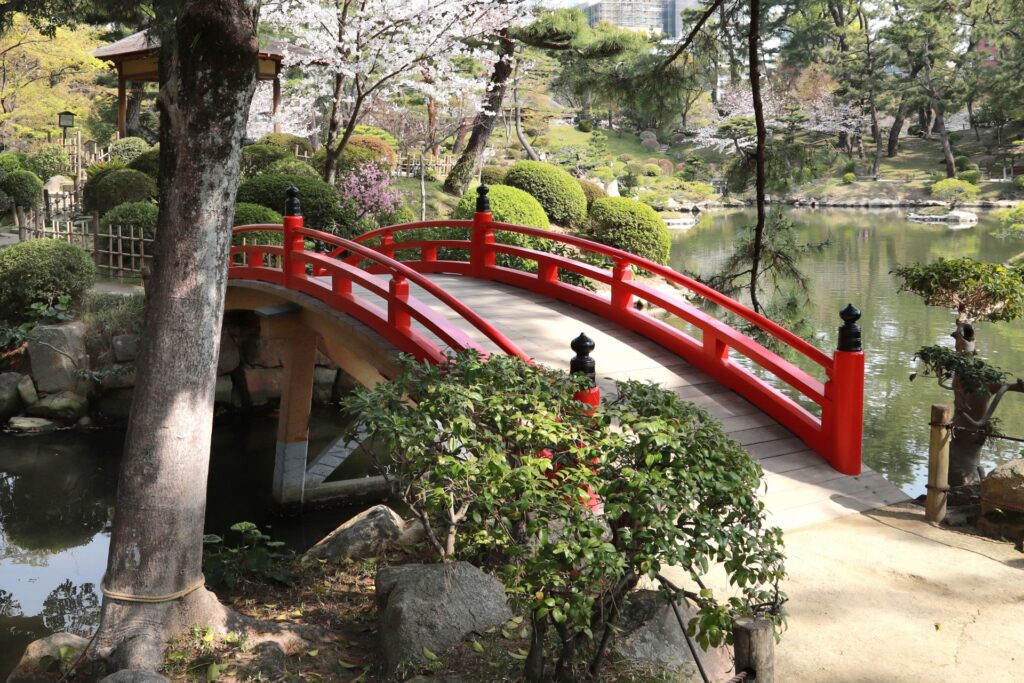
Other elements which can be found in almost all Japanese gardens include tea houses, stone lanterns, and bridges. These of course are not meant to replicate nature but instead are another way to further beautify the garden. At the same time, they also serve purposes beyond the aesthetic and are not there for just decoration. While most tea houses in Japanese gardens today remain empty throughout the majority of the year, in the past they were often used by its owners for both elaborate ceremonies and casual tea drinking. The bridges make it easier to walk around the garden, and so did the stone lanterns before the existence of electric lights.
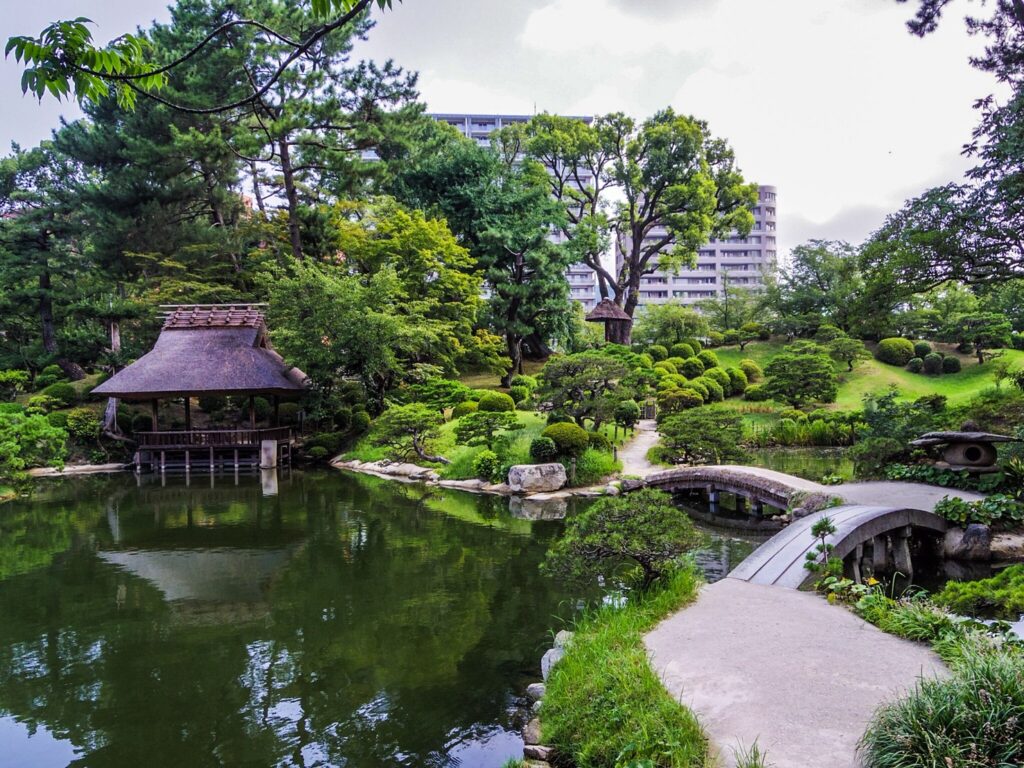
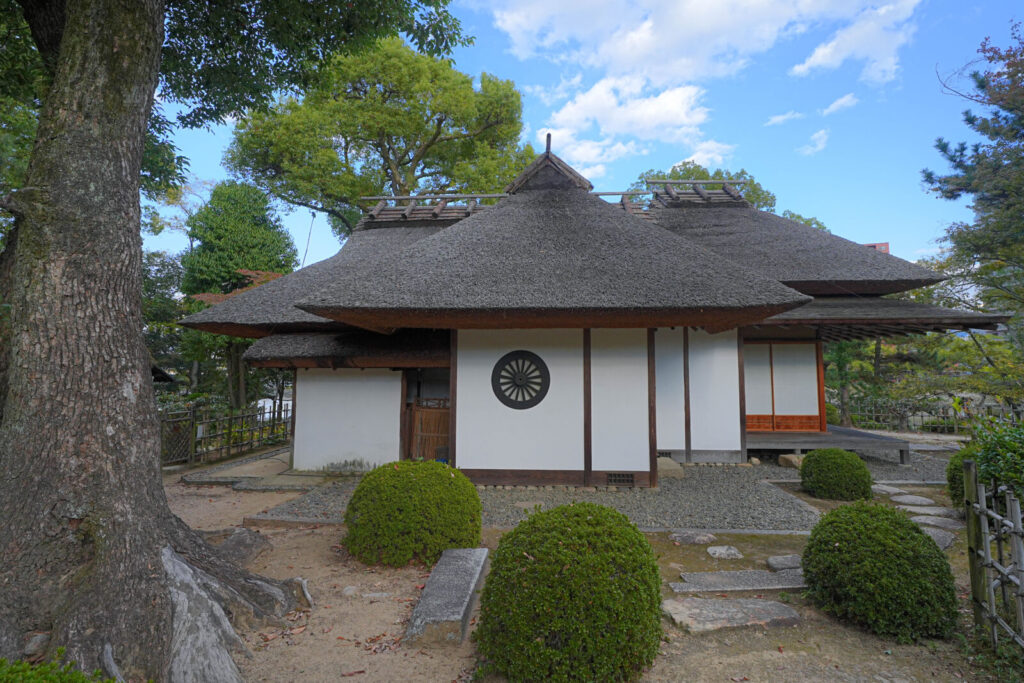
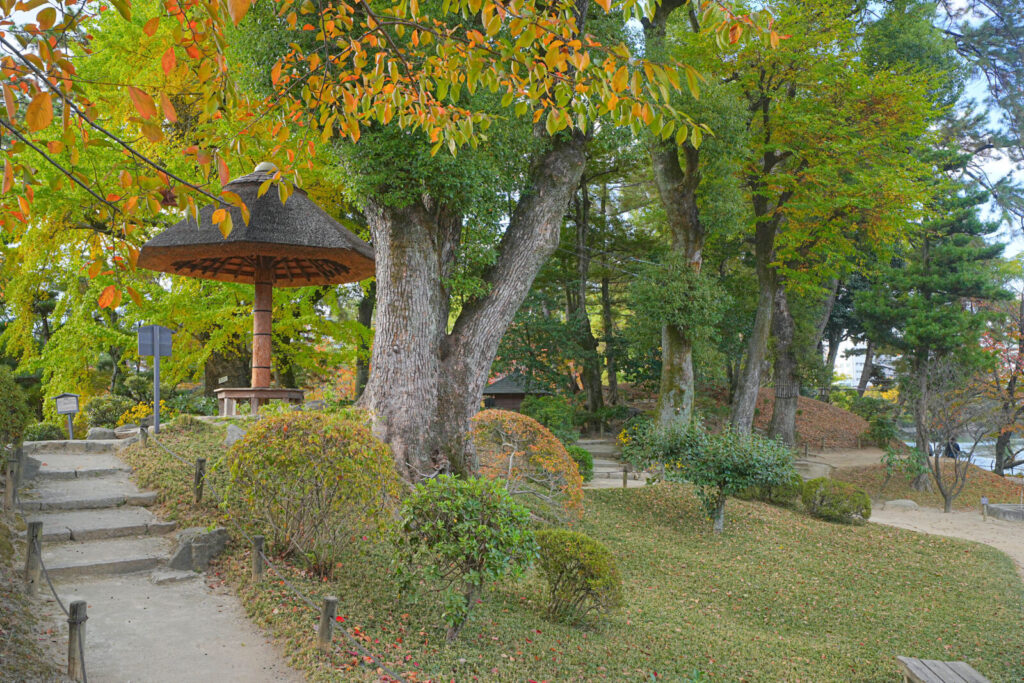
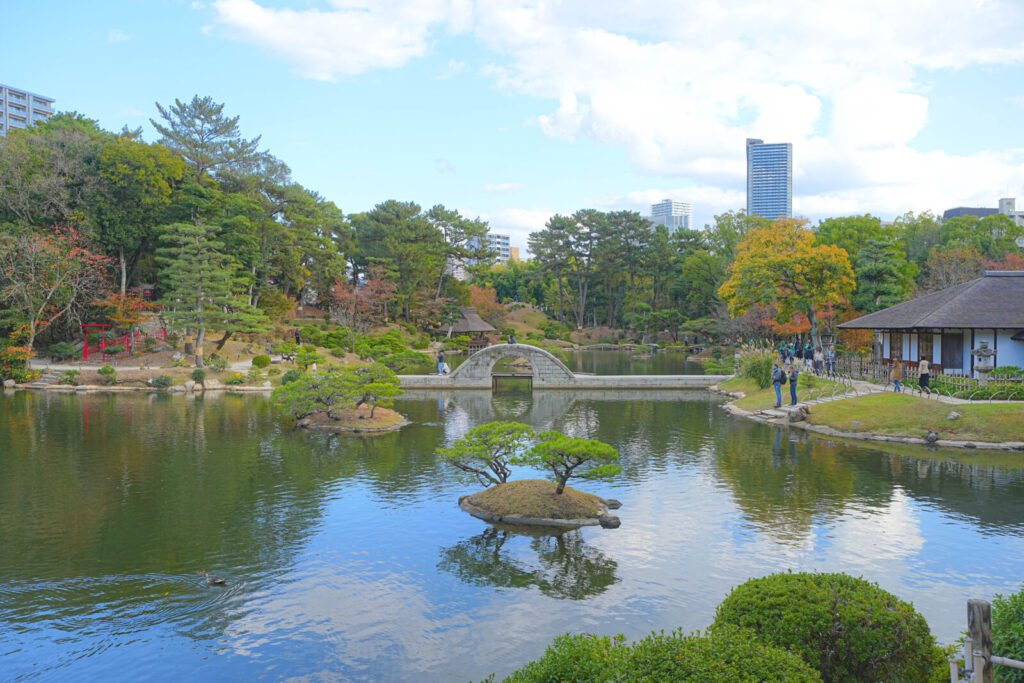
Shukkei-en Garden, which literally translates to “shrink-scenery garden,” perfectly encapsulates these design principles and elements. At its center stands the large Takuei Pond with various “islands” scattered all throughout it. The tallest hill in the garden is known as Geiki-hō (“peak of distant views”) and is meant to represent Mt. Fuji. Multiple tea houses are located throughout Shukkei-en Garden, generating a more charismatic environment. Bridges and dirt paths help both separate and connect the different sections and groves. Everything is laid out carefully to create a miniaturized version of nature.
TOURS VISITING SHUKKEI-EN GARDEN
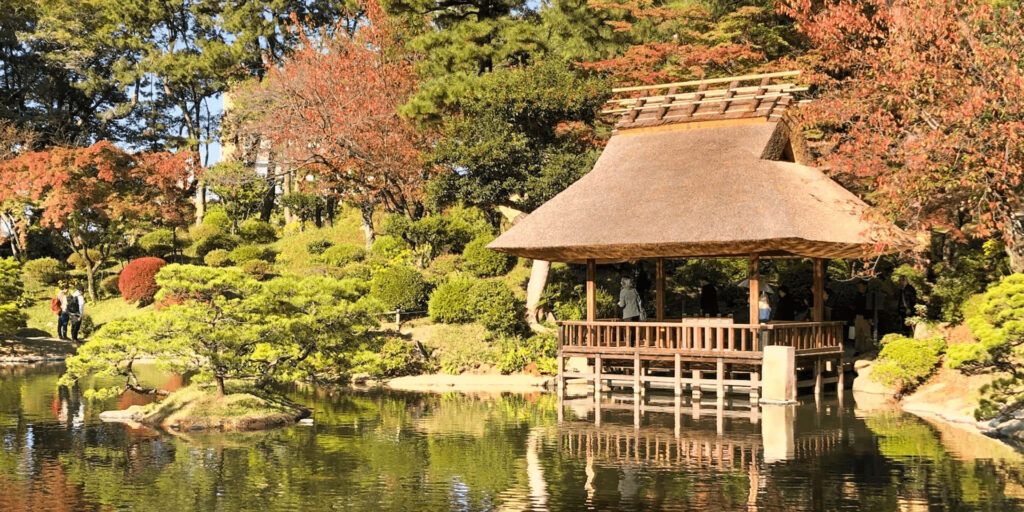
For visitors wanting to make a stop by Shukkei-en Garden, we have several tours which will take guests to Hiroshima's top tourist locations. All of the tours listed below include visits to Peace Memorial Museum, the Atomic Bomb Dome and Hiroshima Castle in addition to the garden. Take a look through the different options and discover which one is best for you!
This half-day tour is conveniently offered both in the morning and the afternoon. In just about four hours, our expert guides will take you to the most highlighted locations within the city centre. The tour begins and ends at Hiroshima Station, so guests staying in Osaka or Kyoto can easily join by making use of the Shinkansen. For those visiting Hiroshima for the first time, this is the perfect way to learn about the history of the city while not having to use up too much time.
If you are a bit more adventurous and wish to explore the city beyond its most popular locations, we highly recommend our Hiroshima Hidden Gems & Highlights tour. Not only will you be able to visit all of the places listed in the description above, but you will also have the chance to go to the stunning Mitaki-dera Temple, one of Hiroshima's hidden gems. This Buddhist temple lies at the foot of a mountain and as such its grounds are abundant with nature. Few tourists know about this location and it is seldom busy during weekdays, creating a peaceful and relaxing environment. At the temple, your guide will provide information about religion in Japan and the different structures which can be found throughout the grounds. Click the "Book Now" button below to join this unique tour of Hiroshima!
When planning a trip to Hiroshima, most travelers will quickly learn about one of the prefecture's most famous places other than the Atomic Bomb Dome and Peace Memorial Museum: the stunning island of Miyajima. Located a short train and ferry ride away from the city, this island is home to the iconic Itsukushima Shrine and its "floating" O-torii gate. The beauty and tranquility of this island have earned it its title as one of "Japan's top three scenic spots." In just a single day, this tour will allow you to visit the breathtaking island along with all the highlighted locations within the city center. If you're interested in learning more about Miyajima and this tour, click on the "View Details" button below.
If you're interested in learning about more tours in the Hiroshima area, you can take a look at our "Best Tours around Hiroshima" page.



